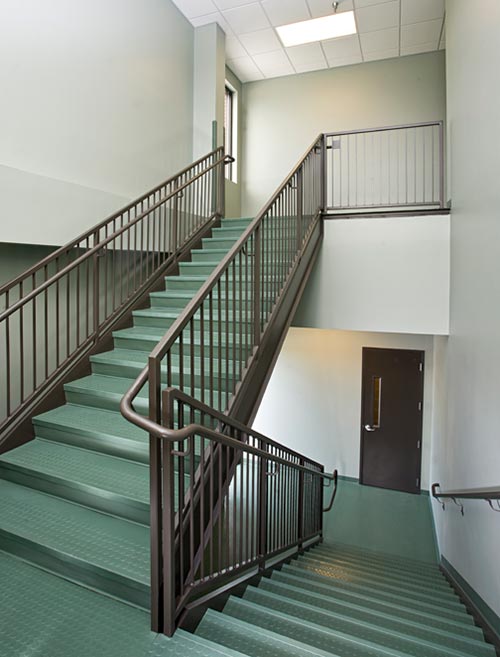Stair treads are an essential part of any staircase, providing safety and grip as people climb up and down. They signal to people that stairs are safe and strong and can be designed to be functional in an emergency without sacrificing style. When upgrading or replacing stair treads, it’s important to understand the different materials available and how to install them. In this guide, we will help you select the right stair treads for your needs and give some pointers on installation.
Buying
Some of the most common materials for stair treads are rubber, vinyl and metal, each with its own unique benefits:
-
Rubber
Rubber stair treads are durable and slip resistant, making them a popular choice for high-traffic areas like schools and hospitals. Rubber is also extremely resistant to fungi as well as environmentally responsible.
-
Vinyl
Vinyl stair treads are durable and slip resistant and are a popular choice for residential and commercial spaces. Long lasting and made to take a lot of wear and tear, vinyl’s customizability makes it a stylish, if not pragmatic, option.
-
Metal
Perhaps the best option for weather, wear and slip resistance, metal stair treads are typically used in industrial and outdoor settings. They are often made of epoxy-filled heat-treated aluminum that resists corrosion and are screwed into the stairs in addition to being glued on, for added longevity and strength.
 After picking the best material for your project, consider if any added slip or visually impaired protection is necessary. A number of options, such as ribbed inserts, grit strips and metal-reinforced noses, can greatly increase the life and safety of your stairs.
After picking the best material for your project, consider if any added slip or visually impaired protection is necessary. A number of options, such as ribbed inserts, grit strips and metal-reinforced noses, can greatly increase the life and safety of your stairs.
Installing
Think of the headache caused by roadwork on a bridge or tunnel. Cities plan what to do with traffic months or even years ahead of the actual work date because they know that those commuters will need to still use that road or be sustainably detoured.
Now think about what would happen if you couldn’t use a staircase you use every day. A staircase is usually one of just a few, if not the only passageway between floors—you could lose half your space just by losing access to your stairway! That’s why the length and completion of your project hinge on your properly planning its execution.
You should have measured your stairs before ordering, but you may also have to trim the treads if they are too wide for your steps. Additionally, if you’re installing metal treads, you will need to measure and mark where the screws will go and drill guide holes.
After you’ve prepared the stairs and treads and closed off the stairwell, the next thing you’ll need to do is give your stairs a thorough washing and let them dry. Once the surface is ready, apply the manufacturer-approved adhesive or tape to the back of the stair tread and press it firmly into place, being diligent to smooth out any bubbles or wrinkles as you go. You will also want to make sure the nose of the tread is tightly against the nose of the step with no movement, so the tread nose will not move once in service. This is also when you would drill your metal treads in place with screws or bolts. Once the adhesive is dry, your stairs are ready for use.
Selecting the right stair tread is about as important as installing it properly—both are essential to ensuring the safety, appearance and longevity of your stairs. With just a little bit of thought and foresight, adding stair treads can be one of the smartest and easiest decisions of your next construction project.







